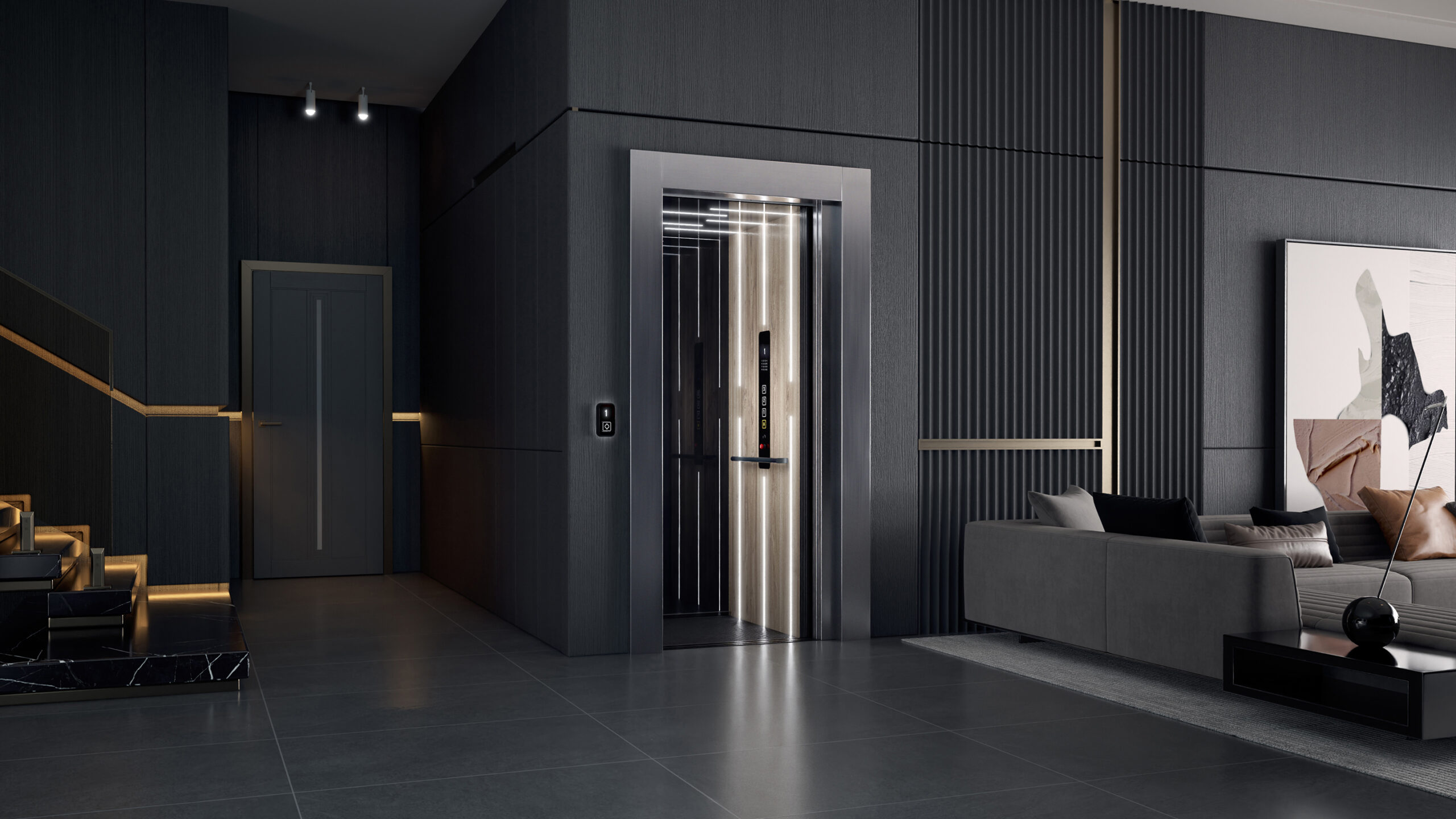Residential Elevator
Residential elevators are elevators designed specifically for use in private homes, providing convenient and safe access to multiple levels.
Residential elevators can be tailored to fit your home's style and needs, providing a seamless and enjoyable experience.
- Convenience: Easy access to multiple floors
- Increased mobility: Perfect for seniors, people with disabilities, or those with mobility issues
- Added value: Increases property value and appeal
- Safety: Reduces risk of accidents and injuries from stair falls
- Luxury: Adds a touch of elegance and sophistication to your home
Types:
- Hydraulic elevators: Use hydraulic fluid to lift the elevator car
- Traction elevators: Use cables and pulleys to move the elevator car
- Machine room-less (MRL) elevators: More compact and energy-efficient
- Stairlifts: Designed for navigating stairs, not a full elevator
Design considerations:
- Space: Ensure sufficient space for installation
- Style: Choose a design that fits your home's aesthetic
- Capacity: Determine the weight capacity you need
- Features: Consider features like lighting, flooring, and handrails
Installation:
- Professional installation: Ensure safe and proper installation
- Customization: Work with a professional to customize your elevator
Cost:
- Varies: Cost depends on type, size, and features
- Investment: Consider the long-term benefits and value added to your home
Features:
- Customizable designs and finishes
- Advanced safety features (e.g., emergency stops, backup power)
- Smooth and quiet operation
- Energy-efficient options
- Space-saving designs
Residential cabin features for lifts may include:
- Custom finishes: Wood, metal, or glass finishes matching home decor.
- Lighting options: Ambient, task, or natural lighting.
- Comfortable seating: Built-in seating or benches.
- Safety features: Emergency stop, alarm, and backup power.
- Technology integration: Touch screens, smartphone app control.
- Space-saving design: Compact designs for small spaces.
- Durable materials: High-quality materials for longevity.
Some cabins may also feature:
- Mirrors or artwork: Aesthetic enhancements.
- Sound systems: Integrated speakers or music systems.
- Heating/cooling: Climate control for comfort.
These features enhance the user experience and match the lift to the home's style.
Residential lift safety features may include:
- Emergency stop button: Halts lift operation in emergencies.
- Safety sensors: Detect obstacles and prevent accidents.
- Backup power: Ensures operation during power outages.
- Door interlocks: Prevents lift operation if doors aren't closed.
- Overload protection: Prevents lift operation if overloaded.
- Alarm system: Alerts users and caregivers in emergencies.
- Non-slip flooring: Reduces fall risk in the lift.
- Emergency lighting: Provides visibility during power outages.
These features prioritize user safety and provide peace of mind.
Residential lift operation features may include:
- Simple controls: Easy-to-use buttons or touch screens.
- Smooth start and stop: Reduces jerking or sudden movements.
- Precise leveling: Accurate stopping at each floor.
- Automatic doors: Convenient and safe door operation.
- Priority call: Allows users to prioritize calls.
- Error detection: Alerts users to potential issues.
- Adjustable speed: Customizable speed for comfortable travel.
Some lifts may also offer advanced features like:
- Smart home integration: Control and monitor lift via smart home systems.
- Remote monitoring: Allows for remote monitoring and troubleshooting.
These features enhance the user experience and provide convenient operation.



